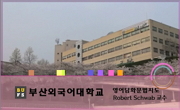In the first national textbook of Korean grammar, published in 1985, it was mentioned that the plural interpretations of negative sentences are derived from ‘ambiguity’. Afterwards all the textbooks of Korean grammar and almost every Korean academ...
http://chineseinput.net/에서 pinyin(병음)방식으로 중국어를 변환할 수 있습니다.
변환된 중국어를 복사하여 사용하시면 됩니다.
- 中文 을 입력하시려면 zhongwen을 입력하시고 space를누르시면됩니다.
- 北京 을 입력하시려면 beijing을 입력하시고 space를 누르시면 됩니다.
https://www.riss.kr/link?id=A109220034
-
저자
이정택 (서울여자대학교)
- 발행기관
- 학술지명
- 권호사항
-
발행연도
2024
-
작성언어
Korean
-
주제어
negative sentence ; plural interpretations ; ambiguity ; vagueness ; test of ambiguity. ; 부정문 ; 복수 해석 ; 중의성 ; 모호성 ; 중의성 검사
-
등재정보
KCI등재
-
자료형태
학술저널
-
수록면
73-89(17쪽)
- DOI식별코드
- 제공처
-
0
상세조회 -
0
다운로드
부가정보
다국어 초록 (Multilingual Abstract)
In the first national textbook of Korean grammar, published in 1985, it was mentioned that the plural interpretations of negative sentences are derived from ‘ambiguity’. Afterwards all the textbooks of Korean grammar and almost every Korean academic grammar books were the same as the first national textbook of Korean grammar in this sense.
But the intrinsic attribute related with negative sentence is not ‘ambiguity’ but ‘vagueness’. One sentence has more than two explicitly different meanings. We call this attribute of the sentence ‘ambiguity’. But if one sentence has comprehensive and vague meaning, we call this attribute ‘vagueness’. The negative sentence has very comprehensive meaning excluding only the meaning of the positive sentence. This is basically related with ‘vagueness’ and almost every plural interpretations of negative sentences are derived from it.
In the comprehensive meaning of negative sentence, if there are more than two explicit meanings, we may call this ‘ambiguity’. We think that one negative sentence in Korean can be interpreted as partial and total negations and we can confirm that this sentence is ambiguous by ‘the test of ambiguity’. So, it may be dangerous to say that the intrinsic attribute of negative sentence is not ‘ambiguity’ but ‘vagueness’. But this like phenomenon is the same as how homonyms make ‘ambiguity’. Therefore we can still say that the intrinsic attribute of negative sentence is ‘vagueness’.
From now on, school grammar textbooks and Korean academic grammar books should make it clear that the plural interpretations of one negative sentence are derived from ‘vagueness’.
동일학술지(권/호) 다른 논문
-
중국 중도입국 청소년 선어말어미 ‘-었-’의 습득 양상 분석 -종적 자료를 중심으로-
- 한국문법교육학회
- wangjiajin
- 2024
- KCI등재
-
- 한국문법교육학회
- 이관규
- 2024
- KCI등재
-
비원어민 교원의 한국어 문법 교육 방법에 관한 인식 연구
- 한국문법교육학회
- 이효정
- 2024
- KCI등재
-
- 한국문법교육학회
- 정은주
- 2024
- KCI등재





 KCI
KCI KISS
KISS






